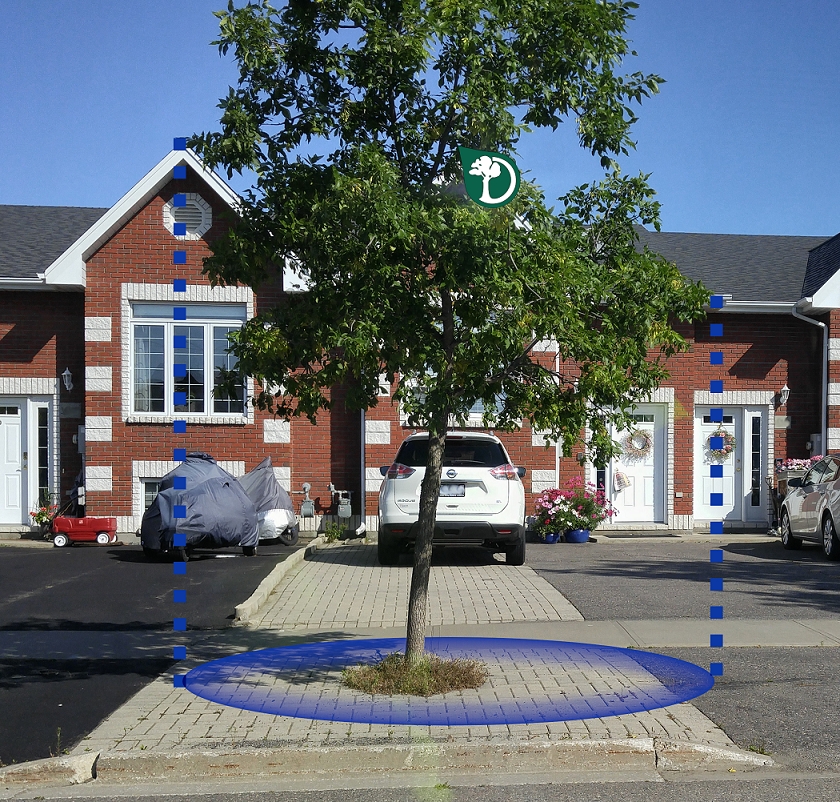The dripline of a tree is an imaginary line extending vertically down from the edge of the farthest reaches of its canopy. It’s effectively the area under the tree up to the horizontal limit that rainwater could “drip” down from the leaves of that specific tree. The quality of this area below the tree determines the nutrients and water available to the tree. Further, this area is critical to how well its roots will develop to provide stability and actually get to those necessary things for growth.

What is there to analyze about a dripline?
Just take a quick look at the above image. See how there isn’t much but asphalt and concrete pavers in the dripline? That’s not good for allowing water to get to the roots of this ash tree. The soil is likely very compact (dense, hard to break up) which makes it more difficult for both roots and water to penetrate the soil but creates a good foundation for pavers. Underneath these pavers and asphalt is usually a gravel base which is nutrient poor and has a low field capacity for water, meaning any nutrients that were applied (like in a fertilizer) would quickly be carried away by the water to an area that the roots could not reach.
This is just for one single street tree. Imagine hundreds or even tens of thousands across a major city or in a park. In forests these driplines overlap and below them is a network of roots and fungi and microbes that are often lacking in urban settings but are nevertheless very important to foresters and arborists.
